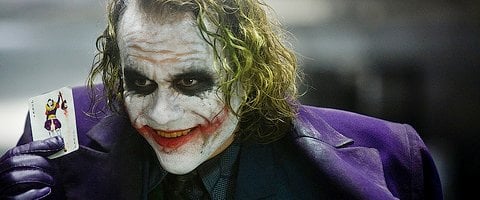Do These Two Videos Explain What's Wrong With Modern Action Movies?

If you've ever watched an old action film and a recent one back to back-- say, Terminator 2 and The Dark Knight-- you can clearly tell that action filmmaking has changed a lot in the last decade. In sharp contrast to the last century of moviemaking, today individual shots can last milliseconds while the camera swoops by in a blur, making it a whole lot harder to get a sense of space in many action scenes scene. Paul Greengrass has turned his kind of filmmaking into his signature style in the Bourne films, using handheld camera and quick pans to throw you into a scene with Jason Bourne and make you feel as disoriented as he probably does. But far more often the style can backfire, giving you movies like Clash of the Titans or even, at moments< The Dark Knight., where entire action scenes go by without you understanding exactly what's happened.
In the two long, very smart video essays below, Indiewire blogger Matthias Stork has dissected this kind of action filmmaking, which he calls "chaos cinema." He starts with clips from movies like The Wild Bunch and Die Hard that show very clearly how things used to be-- you see a gun fire and in the next shot see where the bullet lands, or cut from the inside of the car in a chase scene to the outside of it with no doubt as to where you are at any point. Moving into scenes from movies like Transformers, Bad Boys 2, Shoot 'Em Up and many more, the change in style is obvious, from the use of handheld camera to the content of each shot-- all action, all the time!-- to the quick shots that go by so quickly you can't even tell what they're of. Watch the two videos below to find out much more, and stick around after as I explain why I'm not totally on board with everything here.
I get as frustrated as anyone else when I can't get my bearings in an action scene-- for me it's the one major flaw in The Dark Knight, a movie that gives you spectacular chases with the Batmobile but often makes them impossible to see. But I'm also rankled by the condescending tone of Stork's narration, in which he throws out knee-jerk value judgments like "The only art here is the art of confusion." Though Michael Bay and Paul Greengrass have plenty of detractors, and Sam Peckinpah may well have had a heart attack trying to follow the action in The Bourne Ultimatum, their work also has a style and a substance all to itself-- they have broken the rules of classical cinema and given us something chaotic and tricky, yes, but also new. What they do doesn't always work, and you could argue that the Bourne movie chase scenes would be much better if you always knew what was going on in every shot-- but to write off the Bourne action scenes as incoherent and shallow because of the use of handheld camera seems overly dismissive to me.
Yes, the "chaos cinema" style is used badly more often than not, as the clips from Battle: Los Angeles handily prove. But this is how filmmaking moves forward. Think of the way the likes of Bosley Crowther reacted to the now-classic Bonnie and Clyde and the slow motion "dance of death" that ends the movie. Think of how many people thought the intense cutting in the opening scene of The Wild Bunch, between the action and a group of kids torturing scorpions, was too intense. I'm not saying that "chaos cinema" is the natural evolution of moviemaking, that it's style we should stick with or that it's being used well. But it does seem deliberately stodgy to write off the entire style, to allow only that Kathryn Bigelow uses it well in The Hurt Locker and otherwise call it crass and confusing. These videos do an excellent job of identifying chaos cinema and explaining how it works, but I wish they weren't so anxious to condemn the style entirely.
Your Daily Blend of Entertainment News
Staff Writer at CinemaBlend

